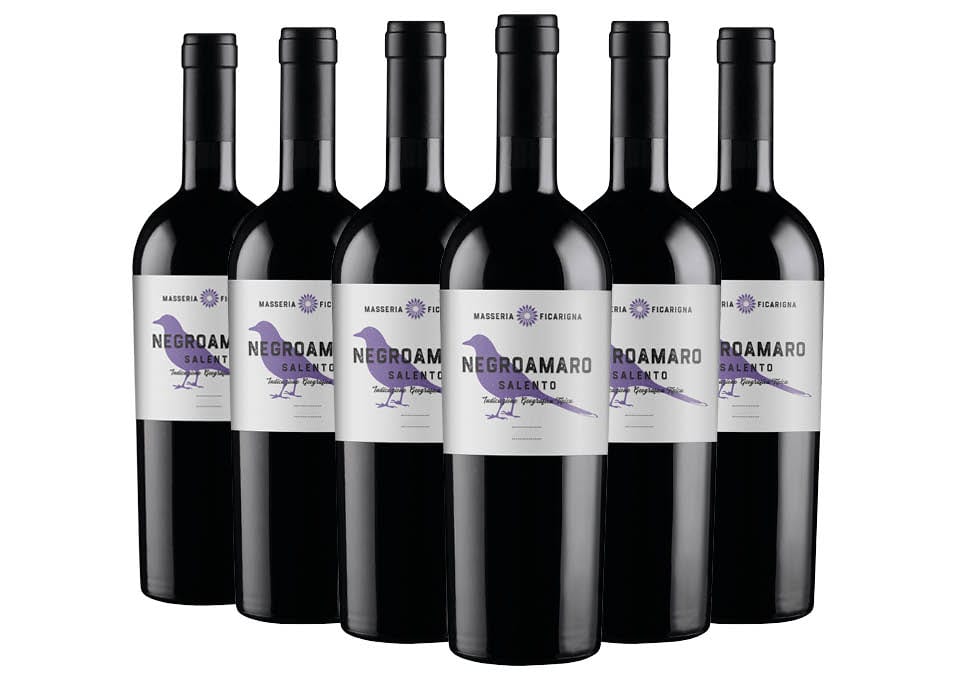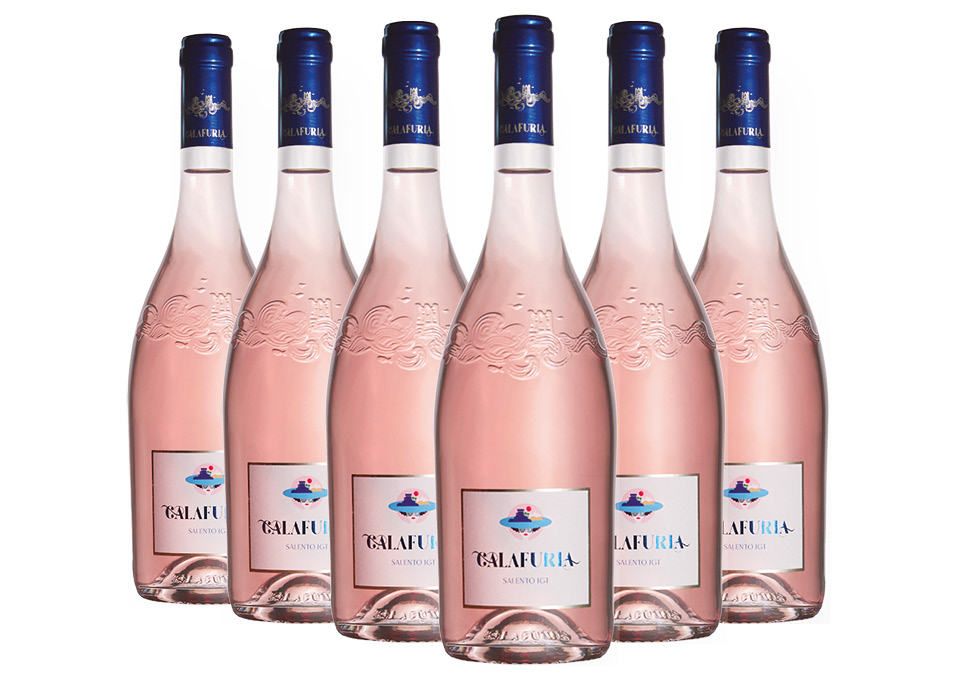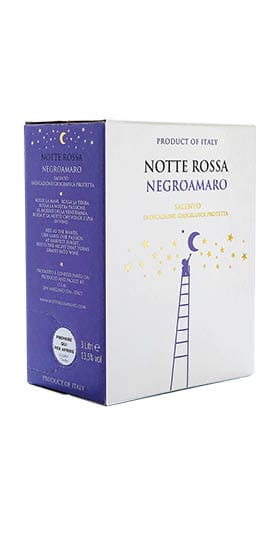Salento, Negroamaro
With more than 11,000 hectares of vineyards in Italy, Negroamaro is a widespread grape variety in Apulia and, in particular, in Salento in the provinces of Brindisi, Taranto and Lecce. With an appearance in Italy thanks to the Greek colonization of the eighth century BC, it hides in the name a possible repetition of the term 'dark', both with the word mavro (black) and with the Latin term nigrum (black). An etymology confirmed by the dark and impenetrable red that characterizes a wine that is undoubtedly recognizable and soon widely used above all as a blending grape. Wine that brings color and that has only recently gained full consideration as a wine proposed alone or in a blend of great charm. In addition to the production of rosé wines, it is a powerful blend, capable of giving body and color while also releasing pleasant and very characteristic bitter notes. The high vigor of the vine requires radical interventions in the vineyard to limit productivity and regiment the plant. Negroamaro finds the correct amount of water needed during the vegetative phase in calcareous and clayey soils. Vinified in purity it is able to offer a wine with an impenetrable color tending to garnet. The nose dominates the red and black fruits in jam, plum, with some menthol and balsamic notes, a hint of thyme often accompanied by subtle spicy hints, leather and cocoa. Negroamaro is powerful and authentic, a true regional pride in the creation of wines with a strong personality.
The Negroamaro of Salento
When it comes to Negroamaro, references to Salento are immediate, in particular to the provinces of Brindisi, Taranto and Lecce where the vine is most widespread. The Salice Salentino DOC appellation created in 1976 also provides for the use of 90% Negroamaro grapes in the Salice Salentino DOC Negroamaro Riserva version, making this grape an ideal representative of the area's viticulture. Given the full body and consistent tannic value, this grape is also suitable for aging, giving more accentuated tertiary hints that greatly distinguish it from the young versions and usually characterized by a more marked acidity. There are currently 21 appellations in which it appears including Negroamaro di Terra d'Otranto DOC, Leverano DOC, Nardò DOC.
What is the origin of the Negroamaro grape?
In all likelihood, the origins of Negroamaro date back to the Greek colonization of the Italian peninsula during the eighth century BC.
What are the characteristics of a wine produced with Negroamaro grapes?
From the visual point of view, among the characteristics of a wine produced with Negroamaro grapes there is first of all the great chromatic intensity determined by a dark red color tending to black. On the nose the Negroamaro releases red and black fruits in jam, plum, raisins, also giving some pleasant spiciness of pepper and thyme. On the palate it is warm and compact, very enveloping with excellent structure and a recognizable tannic capacity, all characteristics that often prelude to a long finish and a complex taste.
What is the best Negroamaro based wine?
If you are looking for the best wine made from Negroamaro grapes it can certainly be of some help to know that Salice Salentino Negroamaro Riserva contains, according to the specification, a high percentage of Negroamaro which makes the blend and its organoleptic characteristics very recognizable.
Salento IGT can be used for the production of white, rosé and red wines. Salento is one of the most interesting and suitable areas of southern Italy for viticulture. The Mediterranean climate, warm and windy, mitigated by the sea breezes and the soils of calcareous-clayey matrix, proved to be ideal especially for the cultivation of red grape varieties.
Salento IGT wines must be produced with grapes from vines suitable for cultivation in the provinces of Brindisi, Lecce and Taranto and registered in the national register of vine varieties for wine grapes. The specification also provides for the possibility of indicating the name of the vine on the label, if the wine is made with at least 85% of the grapes mentioned. The most cultivated grapes are: negroamaro, aleatico, bianco d'Alessano, impigno bianco, malvasia nera di Lecce, malvasia nera di Brindisi, moscatello selvatico, primitivo, susumaniello.
Salento is one of the wine-growing areas of Italy that boasts a long tradition in the production of rosé wine, which draws its origin from the ancient "teardrop" winemaking technique dating back to Roman times, which consisted in letting the grapes tear in the forum vinarium before pressing, collecting and vinifying the precious free-run juice that came out of it separately.
It is no coincidence that the most famous Italian rosé wine comes from Salento: Leone de Castris' Five Roses, the first rosé to be bottled and marketed in Italy in 1943.
Introduced in the region in the twelfth century by the Angevins, Fiano is the white grape that is preparing to become another ambassador of Apulia wine and that in Salento has found a perfect acclimatization, becoming the most cultivated white grape variety together with Chardonnay and native Verdeca.


















